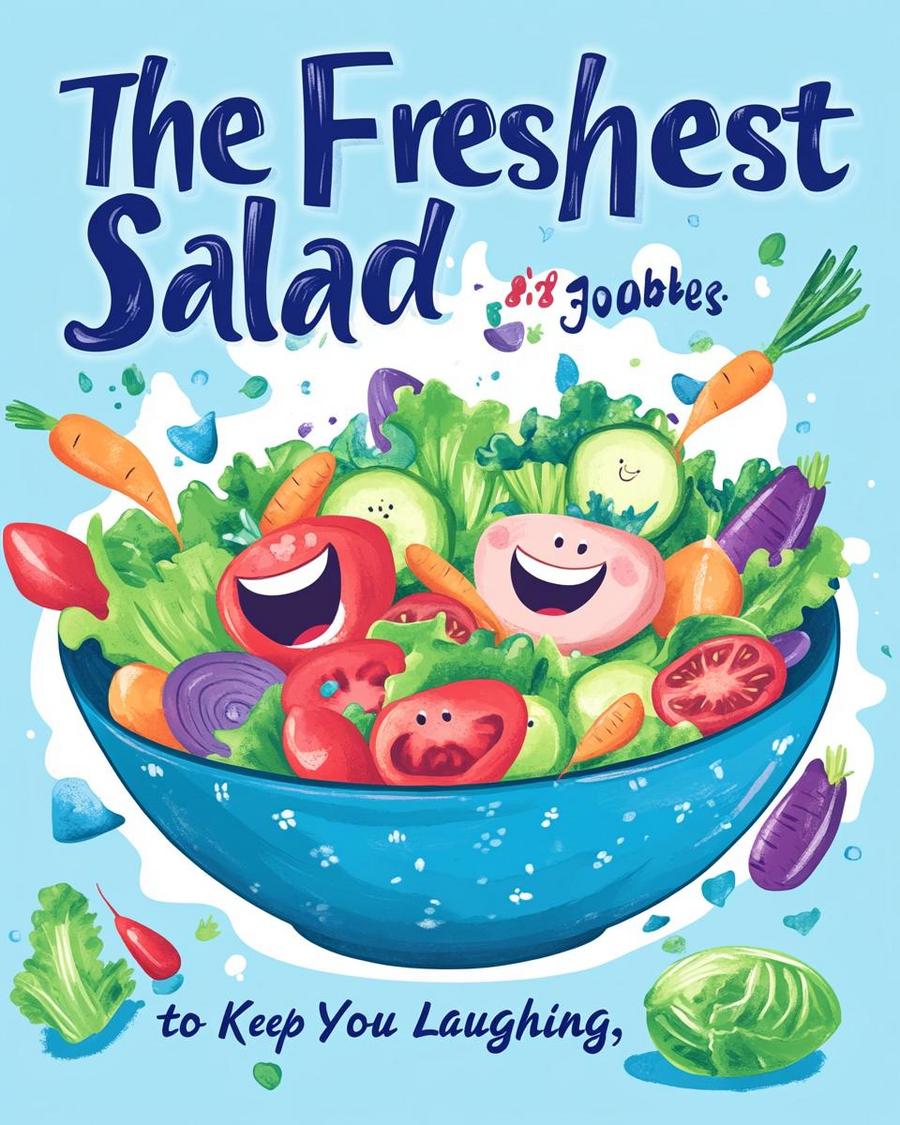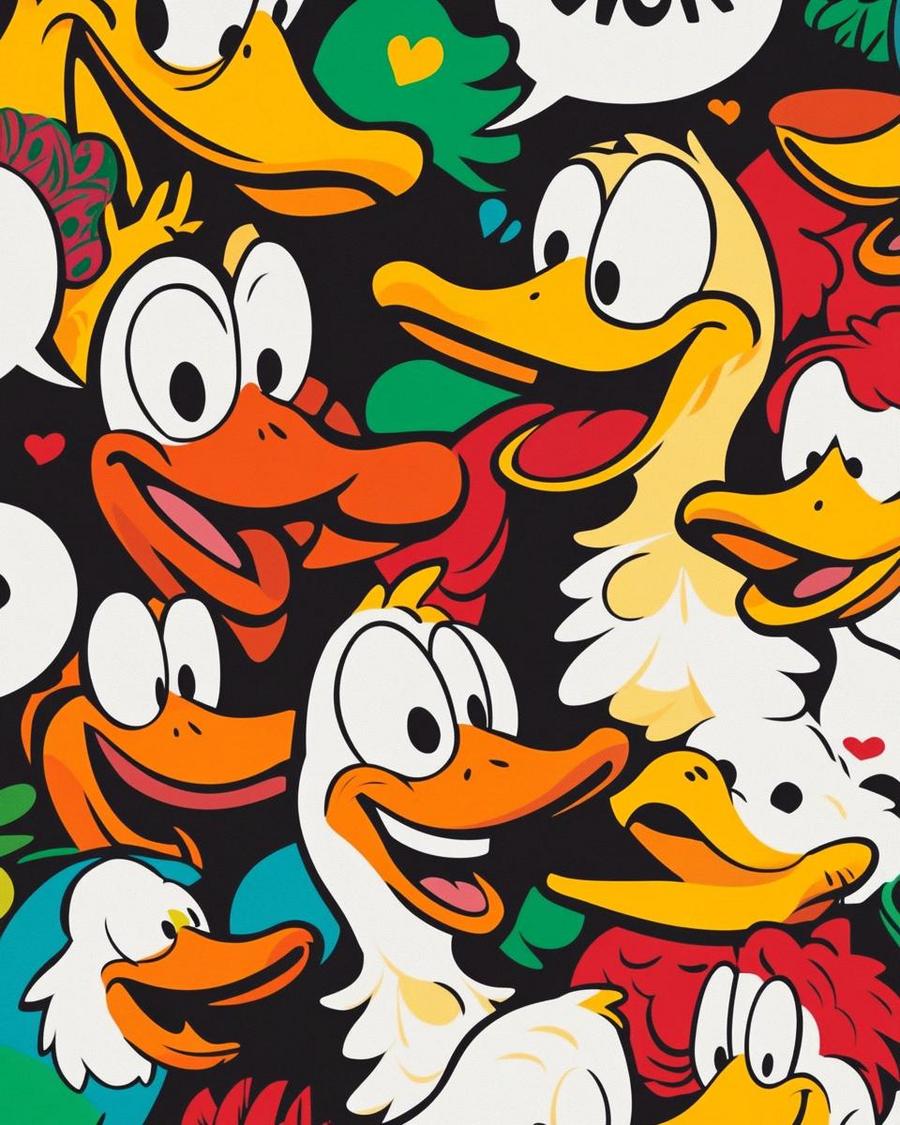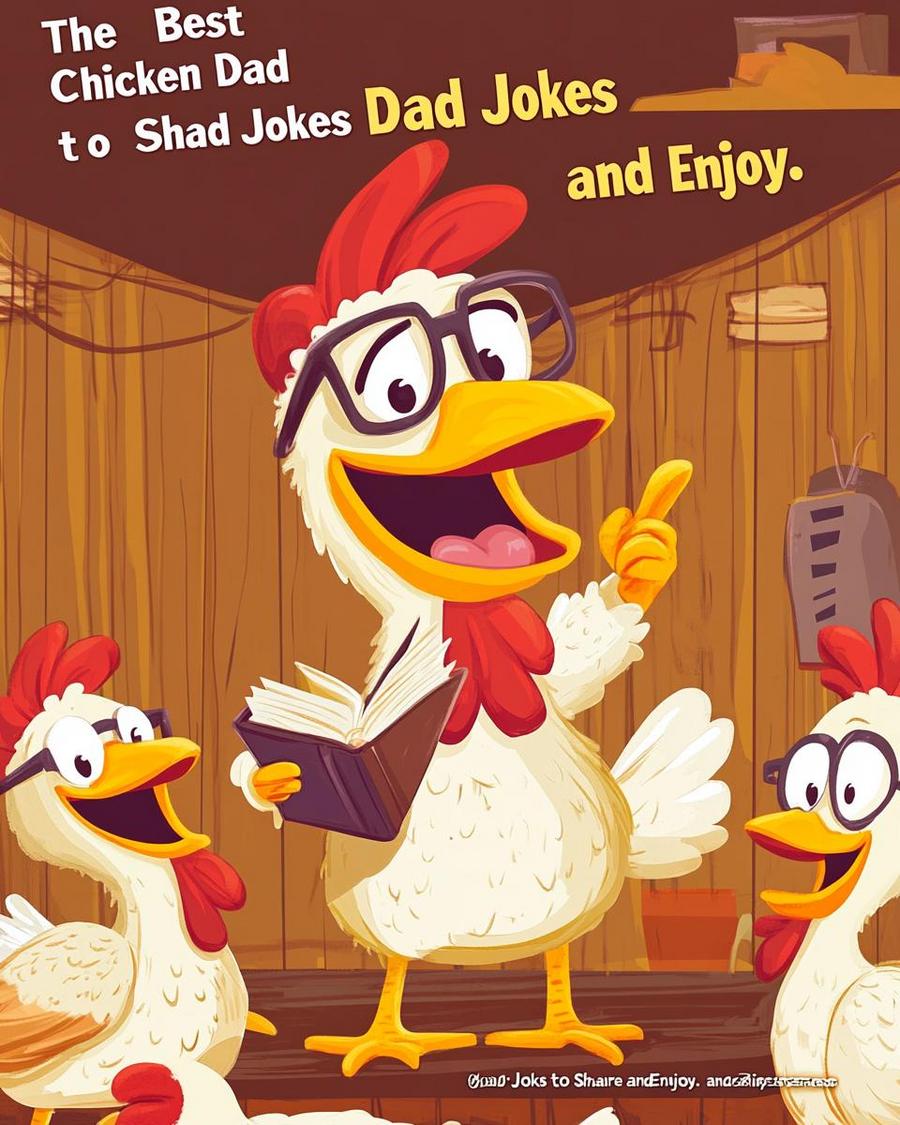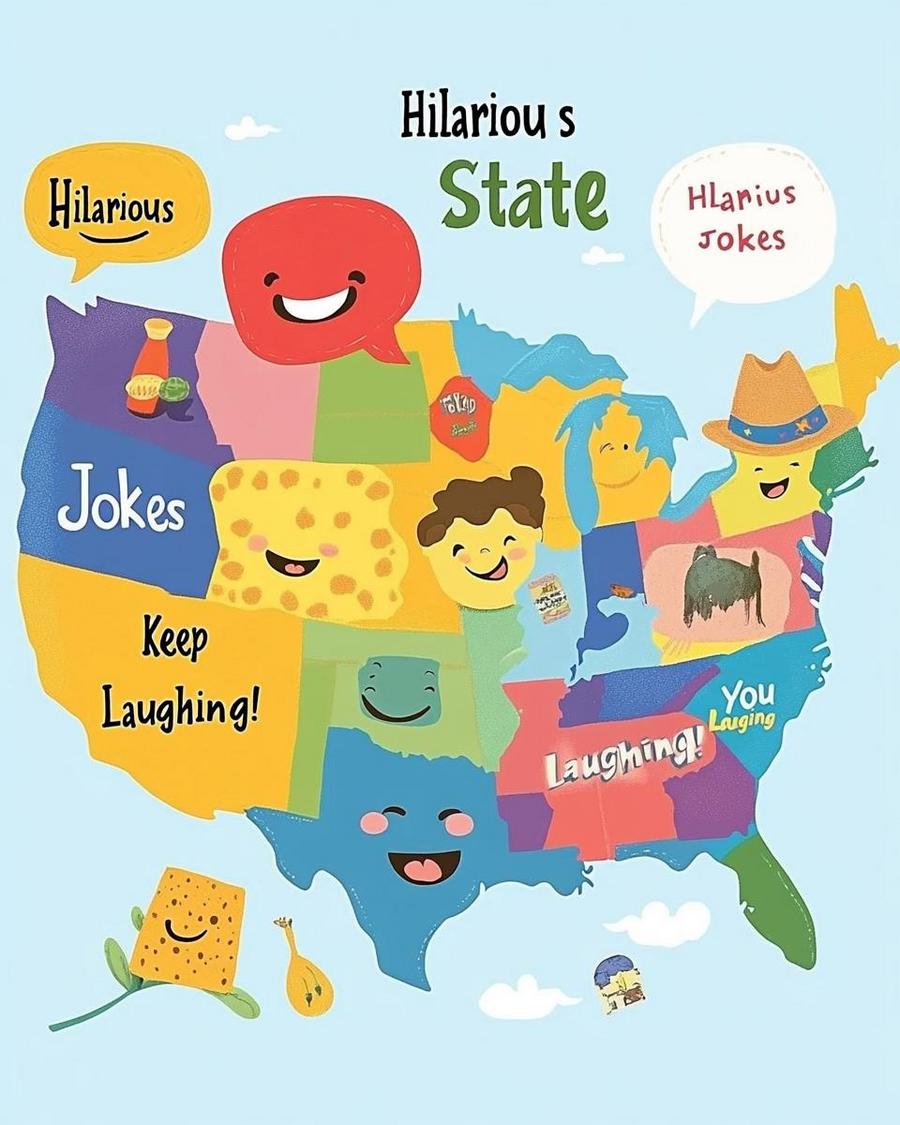Unleash Laughter with Top Spanish Jokes and Puns
Ever wondered why Spanish jokes are so delightful? Whether you’re fluent in Spanish or just love a good chuckle, these jokes have a unique charm. However, not everyone gets to enjoy them due to language barriers. But fear not! We’re here to bridge the gap and share some hilarious Spanish puns that everyone can appreciate.
- Understanding Spanish humor
- Top Spanish jokes and puns
- Cultural insights through humor
Are you ready to dive into the world of humor that transcends language? Let’s explore how math jokes and adult jokes also play a significant role in shaping our understanding of wit and hilarity across different cultures. By the end of this post, you’ll not only have a few new jokes to share but also a deeper appreciation for the art of comedy in Spanish.
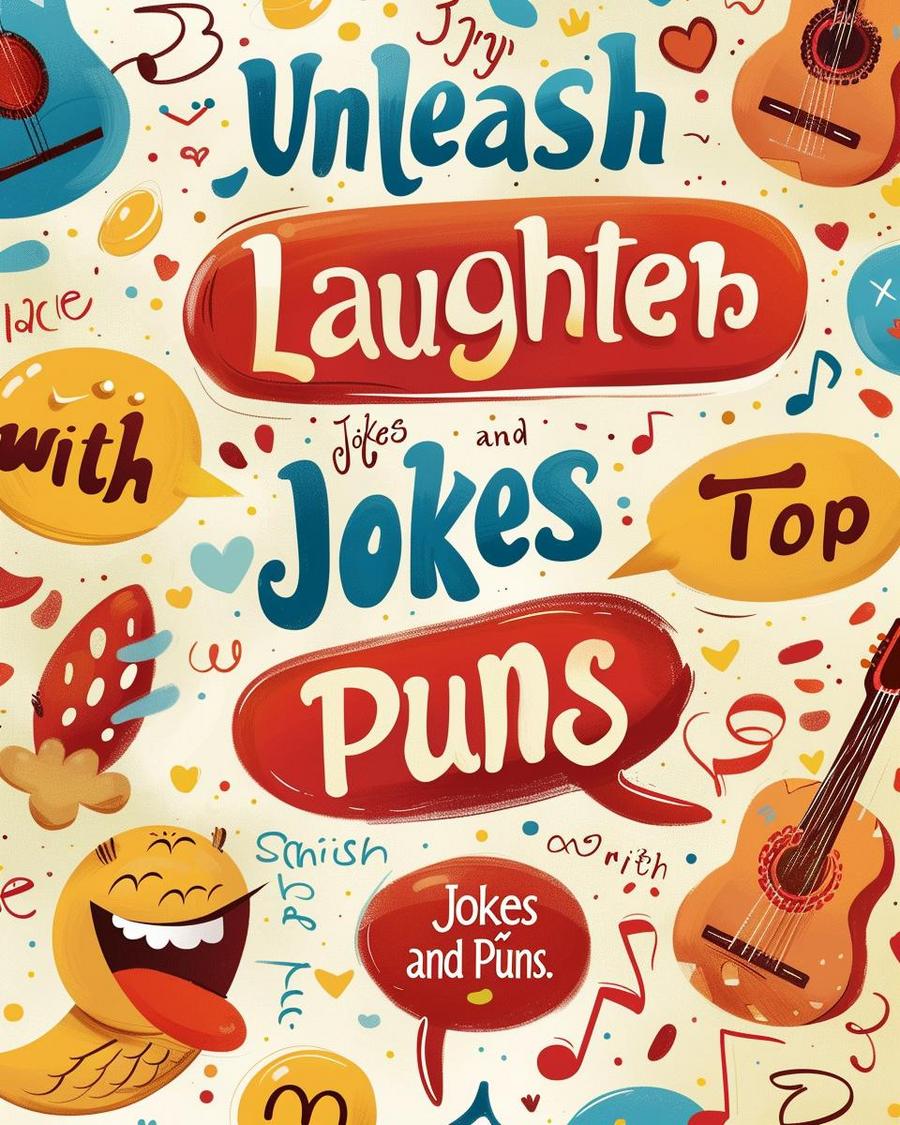
Understanding the Humor in Spanish Puns
Ever wondered why puns hold a special place in Spanish-speaking cultures? Let’s dive into this playful aspect of the Spanish language!
- Spanish Puns and Humor: The structure and variety of the Spanish language make it an ideal playground for puns, where words with different meanings sound alike or identical.
- Examples: “¿Qué hace una abeja en el gimnasio? ¡Zum-ba!” This pun plays on the sound ‘zumba’, linking the buzz of a bee (zum) and Zumba, the dance fitness program.
- Linguistic Features: The use of homophones, homonyms, and conjugation variations in Spanish creates numerous opportunities for wordplay.
Why We Love Spanish Puns
Puns often bring out the quirkiness of the Spanish language, showcasing its flexibility and the creativity of its speakers.
- Cultural Relevance: Puns are often intertwined with cultural references, making them resonate more with native speakers while providing insight into the culture for learners.
- Learning Tool: They are not just fun but serve as excellent tools for language learning, enhancing vocabulary and understanding of linguistic nuances.
Fruitful Laughter: Puns Involving Fruits
Let’s explore some juicy puns that involve fruits and why they’re a hit in Spanish humor!
- Naranja Joke: “¿Qué le dice una naranja a otra naranja? ¡Nada, porque una naranja no habla!” This joke plays on the absurdity of talking fruits, a common humorous technique.
- List of Fruit Puns: Here are a few to tickle your taste buds: “Si no te gustan mis peaches, ¡pues no me hagas caso mango!”
- Effectiveness: Fruit puns are effective due to their simplicity and the universal understanding of fruit, making them easily translatable humor.
Peeling Back the Layers of Humor
Fruit puns are simple yet profoundly adept at showcasing the lighter side of language, often using puns to peel back layers of meaning humorously.
- Accessibility: These puns are accessible to people of all ages and backgrounds, contributing to their widespread appeal.
- Educational Value: They provide a fun way to engage with the language, especially for young learners or beginners in Spanish.
Fruitful Laughter: Puns Involving Fruits
Ever wondered why fruit puns are so popular in Spanish? The Spanish language, with its rich array of homophones, makes it ideal for witty and humorous plays on words. Let’s explore some zestful jokes that revolve around fruits!
Why Do Fruit Puns Make Us Laugh?
Fruit-related puns often involve a play on words that sounds similar to the fruit’s name, leading to unexpected and humorous twists. For example, the word ‘naranja’ (orange) can be used creatively in puns because it sounds like ‘nada en ja’ (nothing in ‘ja’), making it ripe for humor!
- 1. ¿Qué hace una uva cuando está aburrida? ¡Va a parrar!
- 2. ¿Cuál es la fruta más divertida? ¡La naranja-ja-ja!
- 3. ¿Qué le dijo una fruta a otra? ¡Eres la pera!
- 4. ¿Por qué la manzana fue al banco? ¡Porque estaba pelada!
- 5. ¿Cómo se ríe una fresa? ¡Ja fru-ta ja ja!
- 6. ¿Qué tipo de fruta va a la iglesia? ¡Las uvas, porque creen en la vid(a) eterna!
- 7. ¿Qué le dijo el kiwi a la fresa? ¡Eres berry especial!
- 8. ¿Cuál es el baile favorito de las frutas? ¡El mam-banano!
- 9. ¿Cuál es la fruta más paciente? ¡El dátil!
- 10. ¿Qué obtienes al cruzar una serpiente y un plátano? ¡Una boa-nana!
- 11. ¿Por qué el tomate no toma café? ¡Porque le gusta el té-mate!
- 12. ¿Qué fruta es la más cobarde? ¡El caguamelo!
- 13. ¿Cómo se despide un aguacate? ¡Paltas luego!
- 14. ¿Cuál es la fruta más explosiva? ¡La granada!
- 15. ¿Qué dijo la lima a la limonada? ¡Eres mi media naranja!
- 16. ¿Qué hace una manzana cuando necesita ayuda? ¡Llama a la grua-nada!
- 17. ¿Cuál es el postre favorito de los plátanos? ¡Banana split!
- 18. ¿Qué le dice una pera a otra pera? ¡Eres impe(a)rable!
- 19. ¿Qué pasa si una manzana se pelea con una naranja? ¡Naranjas que no!
- 20. ¿Qué le dijo la sandía al melón? ¡Cáscate conmigo!
These jokes illustrate how the Spanish language’s flexibility allows for endless creativity in humor, especially with puns that make everyone, from kids to adults, chuckle. To discover more hilarious Spanish jokes, check out this fantastic resource at Spanish Academy.
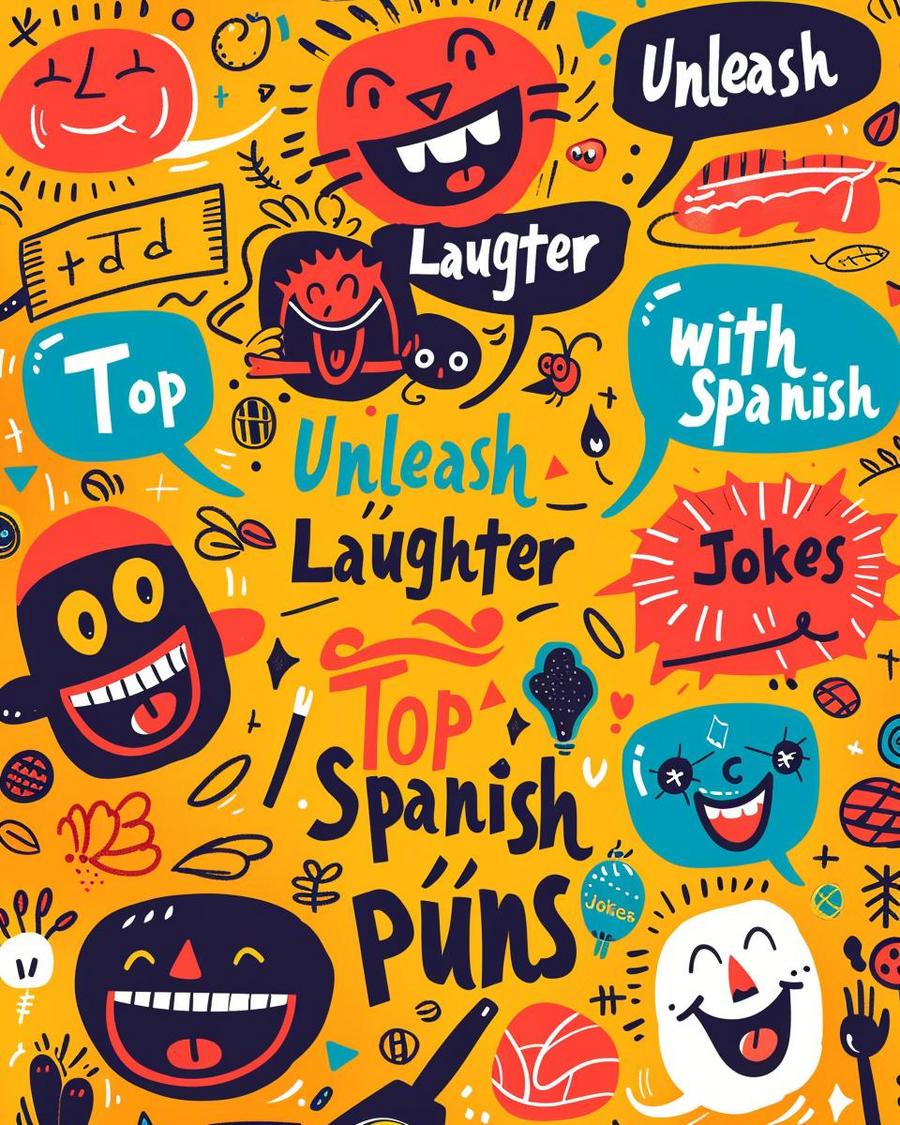
Animal Antics: Hilarious Spanish Jokes Involving Animals
Animal jokes have a universal charm that transcends age and culture, making them a favorite among families and language learners alike. They’re not only funny but also a fantastic way to engage with conversational Spanish in a light-hearted way.
Top 20 Animal Jokes in Spanish
- ¿Qué hace una abeja en el gimnasio? ¡Zum-ba!
- ¿Cuál es el animal más antiguo? La cebra, porque está en blanco y negro.
- ¿Qué le dice un jaguar a otro jaguar? Jaguar-you?
- ¿Por qué los peces son tan inteligentes? ¡Porque viven en escuelas!
- ¿Qué obtienes cuando cruzas un pato con un vampiro? Un pájaro que se chupa la pata.
- ¿Cómo se llama un oso sin dientes? Un oso gumoso.
- ¿Qué le dice una iguana a su hermana gemela? ¡Iguanita!
- ¿Cómo se despide un pez? ¡Salmón-dose!
- ¿Qué hace un gato cuando cae al agua? ¡Nada!
- ¿Cuál es el animal más cómico? El mono-lógico.
- ¿Qué animal necesita llevar gafas? El bui-zorro.
- ¿Cuál es el colmo de un oso polar? Tener frío.
- ¿Qué dice un perro que vende artefactos? Guau-fi.
- ¿Cuál es el animal que siempre lleva sus cosas? El canguro.
- ¿Cómo llamas a un dinosaurio policía? Tricera-cop.
- ¿Qué le dice un cordero a otro? ¡Qué lana estamos!
- ¿Qué tipo de fotos toman los gatos? Selfies-purr.
- ¿Qué hace un pato con un sombrero? ¡Nada extraordinario, solo pato-seando!
- ¿Qué hace una vaca cuando sale el sol? Sombra.
- ¿Cómo llamas a un lobo que medita? Aware-wolf.
How to Use These Jokes in Conversational Spanish
To effectively use these jokes in your Spanish conversations, try to deliver them with natural timing and context. For instance, when discussing animals or humor, introducing a joke can lighten the mood and enhance engagement. Remember, the key is in the delivery, so practice the pronunciation to ensure the punchline lands well!
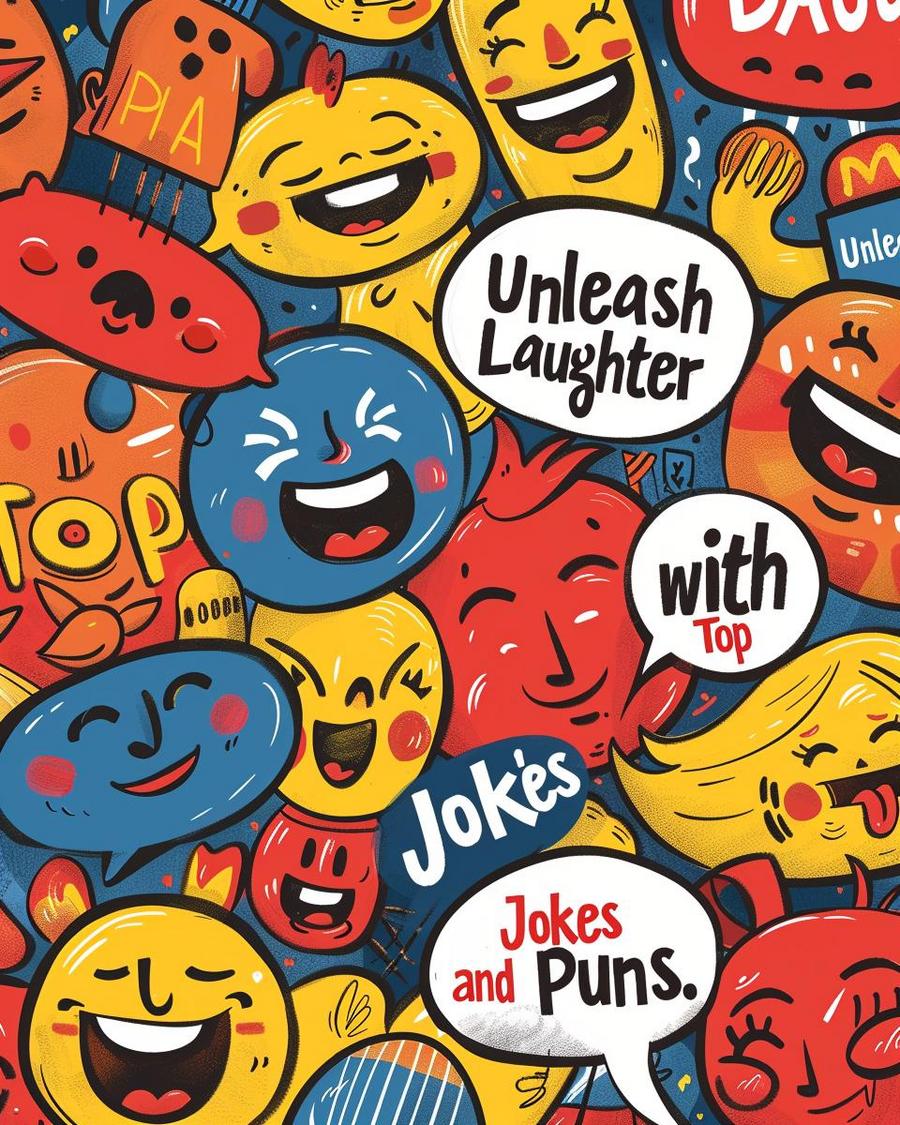
Wordplay Wonders: Spanish Jokes with Multiple Meanings
Delving into the playful complexity of Spanish, it’s thrilling how one word can lead to laughter or a thoughtful chuckle. Here’s why these dual-meaning jokes are not just fun, but educational too!
Laugh and Learn
- ¿Qué le dice un jaguar a otro jaguar? Jaguar you.
- ¿Cómo se dice pañuelo en japonés? Saka-moko.
- ¿Cuál es el animal más antiguo? La cebra, porque está en blanco y negro.
- ¿Qué hace una abeja en el gimnasio? ¡Zum-ba!
- ¿Cuál es el pez más divertido? El paya-so.
- ¿Qué le dice una iguana a su hermana gemela? Igual-ana.
- ¿Cómo llamas a un dinosaurio con un diccionario? Un dino-sabio.
- ¿Qué cuenta el café? Cuenta cuentos.
- ¿Qué dice un plato a otro? ¡Espera, que me Plato!
- ¿Qué le dice una pared a otra? Nos encontramos en la esquina.
- ¿Cómo se llama un campeón de buceo? Campeón del fondo.
- ¿Qué hace una bombilla en una máquina? Da luz a las ideas.
- ¿Cuál es el colmo de un jardinero? Que siempre lo planten.
- ¿Qué le dice un techo a otro? Techo de menos.
- ¿Cuál es el café más peligroso del mundo? El ex-preso.
- ¿Por qué los pinceles nunca se pierden? Porque siempre van con su brocha.
- ¿Qué hace un perro con un taladro? Taladrando.
- ¿Cuál es el rey de los lápices? El lápiz-lázuli.
- ¿Qué dice una nube a otra nube? Oye, ¿tú nubes?
- ¿Qué hace una caja en un gimnasio? Pesa más.
These jokes not only make us giggle but also deepen our understanding of Spanish by highlighting the nuances and versatility in its vocabulary. For a deeper dive into Spanish humor and more fantastic jokes, visit Spanish Academy.
Culturally Charged: Jokes that Depict Spanish Heritage
Spanish humor often weaves in rich cultural references that can be both enlightening and entertaining. Here’s an exploration of how these references play a pivotal role in Spanish jokes.
Why Spanish Cultural Jokes?
Cultural references provide a deeper connection to the heritage and social nuances of Spanish-speaking communities. They resonate well with native speakers and offer a learning scaffold for language learners.
- Why don’t Spanish secrets last long? Because everyone has “Spain” in their business!
- What do you call a Spanish football player with no legs? Gracias.
- Why did the Spanish tomato turn red? Because it saw the salad dressing!
- What do you call a clever Spanish fish? Brill-iant.
- How do Spanish sheep say Merry Christmas? Fleece Navidad!
- Why don’t Spanish cows wear bells? Because their horns work just fine!
- What dance do all Spanish tomatoes know? The Salsa!
- Why did the paella go to therapy? It had too many mixed feelings.
- Why do Spanish writers have trouble finishing books? Too many Juan-more chapters!
- How do Spanish dogs say goodbye? “Hasta la-bark-sta!”
- What’s a Spanish pepper’s favorite movie? Spice Age.
- Why do Spanish boats never get lost? They follow the sea-ñal!
- What do Spanish bees produce? Bee-yen-venido!
- Why was the Spanish football team early? They knew how to España few minutes!
- What did the Spanish clock say to its friend? “I tock Spanish!”
- Why did the Spanish bike lean against the wall? It was two-tired.
- What do you call a Spaniard who can’t find his car? Carlos.
- Why do Spanish spices always win races? They know how to chili and sprint!
- What do you get when you cross a Spanish sheep and a kangaroo? A woolly jumper!
- How do Spanish mathematicians solve problems? With algo-ritmos!
Understanding the Context
These jokes are steeped in cultural nuances, from typical Spanish names like Juan and Carlos to clever plays on words like “Spain” and “españa” (meaning spend). They offer a humorous lens through which non-natives can view and appreciate the vibrancy of Spanish culture.
For more fun with language, check out our collections of animal jokes and animal puns.
Quick Laughs: One-liners and Short Spanish Jokes
As a joke connoisseur, I’ve found that one-liners are not just the soul of wit, but also fantastic tools for learning Spanish and breaking the ice in social settings. Here’s a compilation of 20 side-splitting Spanish jokes that are perfect for your next gathering.
The Benefits of Brevity
- ¿Cuál es el animal más antiguo? La cebra, porque está en blanco y negro.
- ¿Qué le dice una iguana a su hermana gemela? ¡Iguanita!
- ¿Cómo se dice pañuelo en japonés? Saka-moko.
- ¿Qué hace una abeja en el gimnasio? ¡Zum-ba!
- ¿Cuál es el pez más divertido? El pez payaso.
- ¿Qué le dice un jaguar a otro jaguar? Jaguar you?
- ¿Cómo se dice espejo en chino? Aitoiyo.
- ¿Qué hace una caja en un gimnasio? ¡Pesa!
- ¿Qué cuenta el café? Cuentos cortos y espumosos.
- ¿Qué le dice un techo a otro? Techo de menos.
Timing and Delivery
- Si el dinero no da la felicidad, entonces devuélveme el dinero.
- ¿Qué hace un perro con un taladro? ¡Taladrando!
- ¿Cuál es el colmo de Aladino? Tener mal genio.
- ¿En qué se parecen un árbol y un borracho? En que ambos tienen copas.
- ¿Qué le dice una uva verde a una morada? Respira!
- ¿Qué es una abuela que se ríe mucho? ¡Abuelaris!
- ¿Qué le dice una pared a otra? Nos encontramos en la esquina.
- ¿Qué hace un oso panda cuando está aburrido? ¡Pandamonium!
- ¿En qué se parecen los dinosaurios a los músicos? En que los dos se extinguieron.
- ¿Por qué los pinceles nunca van a la cárcel? Porque siempre tienen coartada.
Remember, the key to delivering these jokes is timing. Pause right before the punchline to build anticipation, and enjoy the laughter that follows!
Visual Humor: Understanding Spanish Visual Puns
Hey there! I’m excited to dive into the world of Spanish visual puns with you. These clever jokes not only tickle your funny bone but also offer a glimpse into the language’s rich playfulness.
Why Visual Puns Captivate
Visual puns are a unique form of humor where the fun lies in interpreting images that play on words. They challenge our understanding and make us laugh by connecting seemingly unrelated ideas through visual and verbal cues.
- Example: A drawing of a bee leaving a room with the caption “Adiós, bee-sos!” This pun plays on “besos” (kisses) and “bees,” merging visual and verbal jokes.
Popular Spanish Visual Jokes Explained
Let’s look at some popular Spanish visual jokes and understand their underlying humor:
- Meme: An image of a potato on a sofa with “sofá” highlighted, punning on “sofá” (couch) and “sofa-papa” (couch potato).
- Meme: A picture of an egg with a sad face captioned “Este huevo está estrellado,” which is a pun on “starred” and “cracked egg.”
Sharing and Enjoying Spanish Visual Humor
Sharing these jokes can be a hit on social media or among friends. Here’s how to get the most laughs:
- Know your audience: Make sure the humor aligns with the interests and language proficiency of your group.
- Context is key: Sometimes explaining the pun briefly can make it more accessible, especially for those still learning Spanish.
Visual Spanish jokes are not just about laughter; they enrich our understanding of the language and culture. So next time you come across a Spanish meme, take a moment to appreciate the wit and perhaps share a chuckle with friends!
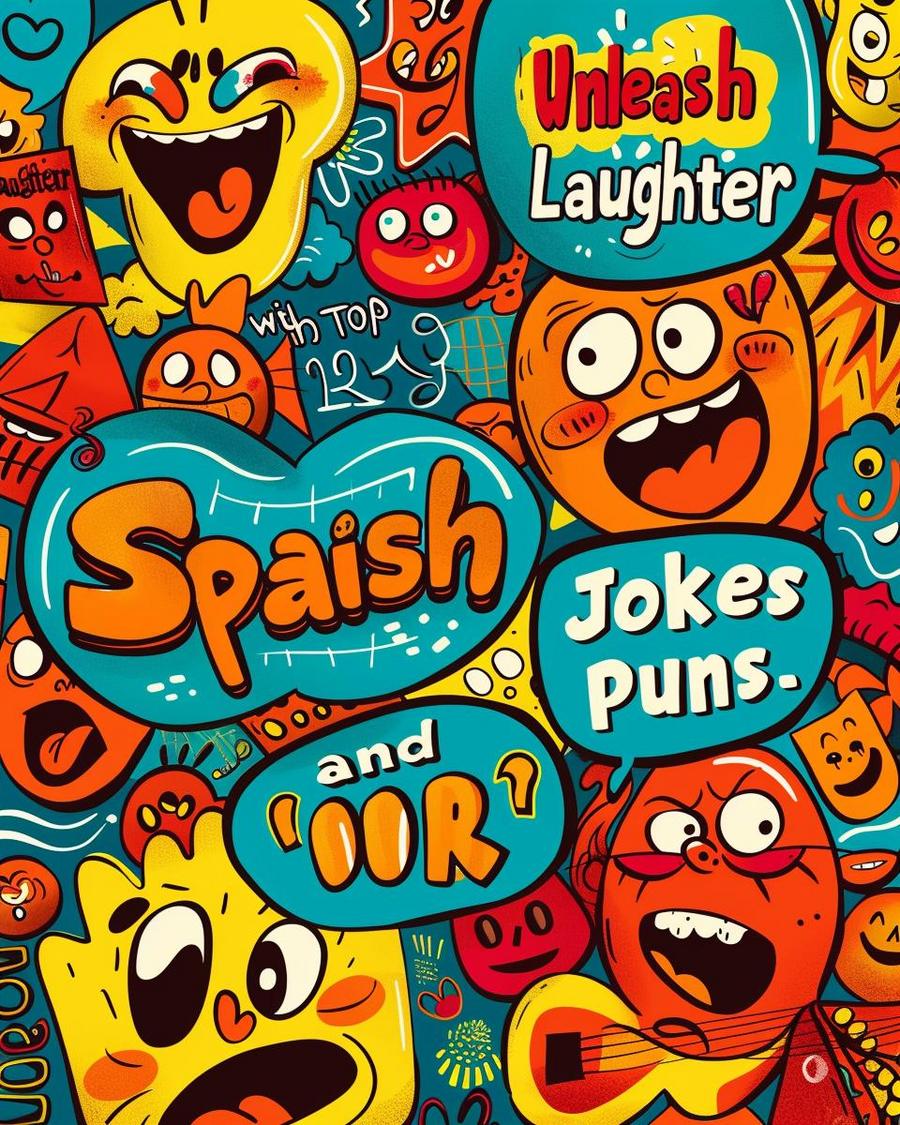
Family-Friendly Fun: Spanish Jokes for All Ages
As an enthusiast of Spanish language and culture, I’ve always appreciated how inclusive humor strengthens family bonds and enhances learning. Here’s why clean, family-friendly Spanish jokes are not just fun but educational too.
- 1. ¿Qué le dice un jaguar a otro jaguar? Jaguar-you!
- 2. ¿Cómo llaman los gatos a su abuelita? Miau-ma!
- 3. ¿Cuál es el animal más antiguo? La cebra, porque está en blanco y negro.
- 4. ¿Qué hace una abeja en el gimnasio? ¡Zum-ba!
- 5. ¿Por qué el libro de matemáticas estaba triste? ¡Tenía demasiados problemas!
- 6. ¿Cuál es el pez más divertido? El paya-so.
- 7. ¿Qué hace una vaca cuando sale el sol? Sombra.
- 8. ¿Cómo se dice pañuelo en japonés? Saka-moko.
- 9. ¿Qué le dice una iguana a su hermana gemela? ¡Iguana know you!
- 10. ¿Cómo se despiden los químicos? Ácido un placer.
Why Choose Clean Spanish Jokes?
Clean jokes ensure that humor is appropriate for all ages and can be shared during family gatherings without hesitation. Additionally, these jokes serve as great icebreakers in educational settings, promoting a fun learning environment.
- 11. ¿Cuál es el colmo de Aladino? Tener mal genio.
- 12. ¿Qué le dice un techo a otro? Techo de menos.
- 13. ¿Cuál es el café más peligroso del mundo? El ex-preso.
- 14. ¿Qué cuenta las ovejas cuando no puede dormir? Humanos.
- 15. ¿Cuándo los reyes van al dentista? Cuando tienen caries-naval.
- 16. ¿Qué hace una vaca cuando tiene hipo? Muge más fuerte.
- 17. ¿Cómo se llama el campeón de buceo japonés? Tokofondo.
- 18. ¿Qué dice un jardinero a otro? ¡Ho-la!
- 19. ¿Qué hace un perro con un taladro? Taladrando.
- 20. ¿Por qué las focas miran siempre hacia arriba? ¡Porque ahí están los focos!
Using these jokes during Spanish lessons can help students grasp vocabulary and grammatical structures in a memorable way. Humor is a powerful tool in language acquisition, making lessons enjoyable and less intimidating for learners of all ages.
Laugh and Learn: Educational Benefits of Spanish Jokes
Hi everyone! As a passionate educator and humor enthusiast, I’ve discovered that humor, especially jokes, can be an incredibly effective tool for learning Spanish. Let’s dive into how Spanish jokes can enhance language skills.
Why Jokes Work in Language Learning
Jokes are not just for laughs—they make language classes lively and educational. By hearing or telling a joke, students see language in action. This dynamic method helps with remembering new words and understanding grammar in a fun context.
- Joke 1: ¿Qué hace una abeja en el gimnasio? ¡Zum-ba!
- Joke 2: ¿Qué le dice un jaguar a otro jaguar? Jaguar you!
- Joke 3: ¿Cómo se llama un boomerang que no vuelve? Un palo.
Tips for Using Jokes in Spanish Classes
Here are some practical tips to effectively integrate jokes into your Spanish lessons:
- Start with Simple Jokes: Use basic jokes that require minimal language proficiency to ensure all students can participate and understand.
- Explain Cultural Contexts: Some jokes may include cultural references. Explaining these can provide insights into Spanish-speaking societies.
- Encourage Creativity: Have students create their own jokes. This encourages using new vocabulary and grammar in a creative way.
Using humor in education not only breaks the ice but also builds bridges in language learning. Next time you’re in class, drop a joke or two and watch the learning happen effortlessly!
More Educational Jokes for Spanish Mastery
- Joke 4: ¿Cuál es el animal más antiguo? La zebra, porque está en blanco y negro.
- Joke 5: ¿Por qué los pájaros no usan Facebook? ¡Porque ya tienen Twitter!
- Joke 6: ¿Qué le dice un techo a otro? Techo de menos.
Remember, learning Spanish through jokes not only makes the class enjoyable but also enhances retention of language concepts. So, keep laughing and learning!
Advanced Humor: Wordplay and Double Entendres in Spanish
As a connoisseur of Spanish humor, I find that the intricacies of wordplay and double entendres not only tickle the funny bone but also illuminate a speaker’s linguistic skill. Here’s a look at some sophisticated Spanish jokes that truly showcase linguistic creativity.
Exploring Advanced Spanish Wordplay
- ¿Qué le dice un jardinero a otro? ¡Hojala!
- ¿Cómo se queda un mago después de comer? Magordito.
- ¿Qué hace una abeja en el gimnasio? ¡Zum-ba!
- Si el estudio da frutos, ¿el árbol da libros?
- ¿Qué cuenta el café? Cuentos cafés.
- ¿Qué le dice una iguana a su hermana gemela? ¡Iguanita!
- ¿Cómo se despiden los químicos? Ácido un placer.
- ¿Qué le dice una pared a otra? Nos vemos en la esquina.
- ¿Qué hace una caja en un gimnasio? ¡Pesa!
- ¿Qué le dice un botón a otro? ¡Qué aburrimiento, siempre con la misma camisa!
Mastering Double Entendres
- ¿Qué le dijo un plátano a otro? ¡Palta-nos vemos!
- ¿Cómo llama el toro a su hijo? ¡Hijo de vaca!
- Si se muere una pulga, ¿la entierran o la despulgan?
- ¿Qué hace un pez? ¡Nada!
- ¿Qué le dice un techo a otro? Techo de menos.
- ¿Qué es un tomate en un campo de fútbol? ¡Un tomatón!
- ¿Cómo se llama un campeón de buceo japonés? Tokofondo.
- ¿Qué hace un oso en el Polo Norte? ¡Oso polar!
- ¿Qué le dijo una oreja a otra? Con tanta cera y no brillamos.
- ¿Cómo se llama el campeón de buceo japonés? Yaquetuver.
Understanding and laughing at these jokes not only tests your Spanish but also deepens your appreciation for the language’s flexibility and cultural nuances. It’s a delightful way to enhance your Spanish proficiency!


